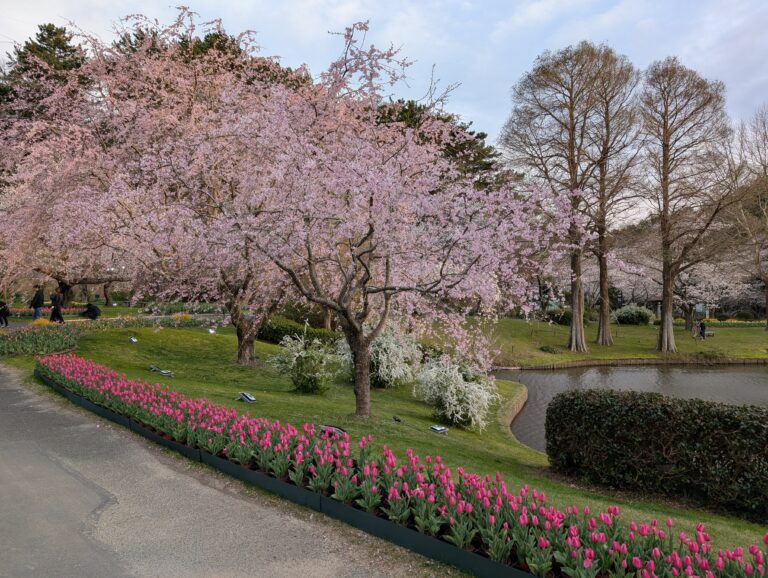Spring in Japan brings one of the most magical natural spectacles in the world – the blooming of cherry blossoms, or “sakura” as they’re called in Japanese. This isn’t just about pretty flowers; it’s a nationwide celebration that transforms parks, riverbanks, and castle grounds into dreamlike pink wonderlands!
If you’re planning to visit Japan during cherry blossom season, you’re in for a treat! This guide will walk you through everything you need to know about enjoying “hanami” (cherry blossom viewing) like a local, with the latest 2025 forecast, top viewing spots, and insider tips to make your experience truly unforgettable.
Cherry Blossoms and Hanami Basics
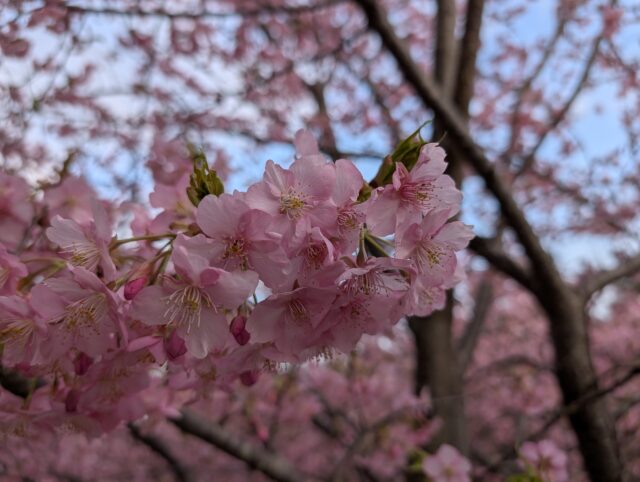
Let’s start with the basics – what exactly is hanami? Simply put, hanami (花見) literally means “flower viewing,” but it’s so much more than just looking at blooms! It’s a cherished tradition where friends, families, and colleagues gather under blooming cherry trees to eat, drink, and celebrate the arrival of spring.
Think of it as the world’s most beautiful picnic, with pink petals creating a canopy overhead and occasionally floating down like fragrant snowflakes. The tradition dates back centuries but remains incredibly popular today.
The most common cherry tree species in Japan is Somei Yoshino, known for its pale pink (almost white) blossoms. Other popular varieties include:
- Shidarezakura (weeping cherry) – with graceful drooping branches
- Yaezakura – featuring lush, multi-layered petals
- Kawazu-zakura – an early-blooming variety with vibrant pink flowers
What makes cherry blossoms so special in Japanese culture? Their fleeting beauty! Most varieties bloom for just 7-10 days before the petals begin to fall, symbolizing the transient nature of life – a concept deeply rooted in Japanese aesthetics.
The History and Culture of Hanami
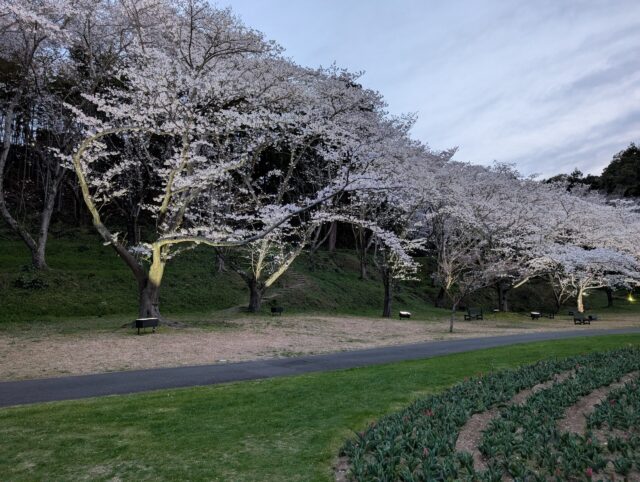
Hanami isn’t a modern invention – it’s a tradition with over 1,000 years of history! While people have admired plum blossoms since the Nara period (710-794), cherry blossom viewing became popular during the Heian period (794-1185) among the aristocracy.
Emperor Saga of the early 9th century is credited with hosting some of the first official hanami parties at Kyoto’s imperial court, complete with poetry reading and sake drinking under the blossoms. By the Edo period (1603-1868), hanami had spread to people of all social classes, becoming the beloved nationwide tradition we see today.
The cherry blossom holds profound cultural significance in Japan:
- Symbol of renewal – marking the start of spring and the new school/business year
- Metaphor for life’s impermanence – the concept of “mono no aware” (the pathos of things)
- National flower – representing Japanese identity and cultural pride
Even today, the Japanese Meteorological Agency tracks the “sakura front” (cherry blossom forecast) as it moves northward across the country each spring, with daily updates on national news!
Cherry Blossom Forecast 2025
Planning your hanami adventure requires good timing! The 2025 cherry blossom season is expected to follow typical patterns, with blooms starting in the southwest and gradually moving northeast.
Here’s the predicted 2025 flowering schedule for major cities:
| City | First Bloom | Full Bloom |
|---|---|---|
| Tokyo | Around March 24 | Around April 1 |
| Kyoto | Around March 29 | Around April 6 |
| Osaka | Around March 29 | Around April 5 |
| Fukuoka | Mid-March | Late March |
| Sapporo | Early May | Mid-May |
Remember: These are forecasts based on historical data and current climate predictions. Mother Nature can be unpredictable, so it’s always good to have a flexible itinerary!
For the most up-to-date information, check the Japan Meteorological Corporation’s official cherry blossom forecast, which gets updated regularly starting in January 2025.
The cherry blossom season typically lasts only 1-2 weeks from first bloom to the petals falling, so timing is everything! The best viewing is usually 5-7 days after first bloom when trees reach full bloom (mankai).
Preparing for Hanami: What to Bring
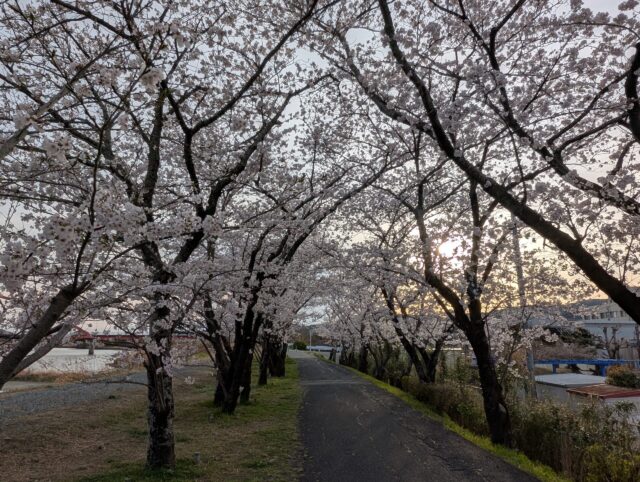
Excited to join in this wonderful tradition? Here’s what you’ll need for a perfect hanami picnic!
Essential Items:
- Picnic sheet or tarp – Blue plastic sheets are the traditional choice (available at 100-yen shops)
- Portable food and drinks – Bento boxes, onigiri (rice balls), and sake or beer are hanami classics
- Trash bags – Remember, Japanese parks expect you to take your trash home with you
- Wet wipes and hand sanitizer – For quick clean-up
- Warm layers – Spring evenings can get chilly!
- Camera – For capturing those magical moments
Pro Tips:
- Popular parks fill up FAST – at top spots like Ueno Park, people start claiming spots before dawn
- Consider a hanami bento from department stores or convenience stores – they offer special seasonal options
- Many parks prohibit alcohol – check the rules before you go
- For popular destinations, send a “scout” early to claim a spot while others shop for supplies
The beauty of hanami is its simplicity – all you really need is good company and a spot under the blossoms to experience this magical season like a true local!
Popular Cherry Blossom Viewing Spots in Tokyo
Tokyo offers countless spots to enjoy cherry blossoms, from vast parks to intimate riverside paths. Here are the must-visit hanami locations in the capital:
Ueno Park – Tokyo’s most famous hanami spot with over 1,200 cherry trees creating a stunning tunnel of blossoms. It gets incredibly crowded, but the festive atmosphere with food stalls and lanterns makes it worth braving the crowds.
Shinjuku Gyoen – A more peaceful option with 1,300+ cherry trees and various species that bloom at different times, extending the viewing season. The 200 yen entrance fee helps keep crowds manageable.
Meguro River – This 3.8km stretch lined with 800+ cherry trees is absolutely magical, especially in the evening when lanterns illuminate the blossoms. Perfect for a romantic stroll!
Chidorigafuchi – The moat area around the Imperial Palace transforms into a fairytale scene with cherry trees reflecting in the water. Renting a rowboat for blossom viewing from the water is an unforgettable experience.
Yoyogi Park – A favorite spot for younger crowds with a vibrant, festival-like atmosphere during hanami season. Bring your own food and drinks for a proper hanami party!
For those looking to avoid crowds, consider these local secret spots:
- Koishikawa Botanical Garden – University of Tokyo’s beautiful garden with various cherry tree species
- Yanaka Cemetery – Surprisingly serene cherry blossom spot with historical significance
- Inokashira Park – A bit outside central Tokyo but worth the trip for its romantic atmosphere
Cherry Blossom Spots Across Japan

While Tokyo offers amazing hanami experiences, some of Japan’s most breathtaking cherry blossom views are found outside the capital. Here’s where to head for truly special blossom viewing:
Kyoto – The ancient capital offers cherry blossoms against the backdrop of temples and traditional architecture. Don’t miss:
- Philosopher’s Path – A canal lined with hundreds of cherry trees
- Maruyama Park – Famous for its massive weeping cherry tree
- Arashiyama – Where blossoms, mountains, and the Katsura River create picture-perfect scenery
Yoshino (Nara Prefecture) – Perhaps Japan’s most famous cherry blossom destination with over 30,000 trees covering the mountainside in pink waves.
Hirosaki (Aomori Prefecture) – The northern castle town features 2,600 trees, moats filled with petals, and breathtaking tunnel-like paths of blossoms.
Hokkaido – For late-season viewing (early May), head north to see cherry blossoms with snow-capped mountains in the background!
Himeji – The magnificent white castle (Japan’s finest) surrounded by 1,000+ cherry trees is the definition of postcard-perfect.
For those who can’t make it to Japan in late March/early April, consider these alternative options:
- Kawazu (Izu Peninsula) – Famous for early-blooming cherry trees (February-March)
- Okinawa – The southern islands see cherry blossoms as early as January!
- Autumn leaf viewing – If you’re visiting in fall, Japan’s autumn colors offer similarly breathtaking natural displays
Enjoying Yozakura: Cherry Blossoms at Night
Day views are stunning, but have you experienced the magical world of yozakura (night cherry blossoms)?
When illuminated after sunset, cherry blossoms take on an entirely different, ethereal character. The soft pink petals glow against the night sky, creating an almost dreamlike atmosphere that must be seen to be believed!
Top yozakura spots include:
- Chiyoda’s Sakura Festival (Tokyo) – With about 230 trees illuminated along the Chidorigafuchi moat
- Nakameguro (Tokyo) – Where pink lanterns reflect on the river alongside the blossoms
- Maruyama Park (Kyoto) – Famous for its spectacularly lit weeping cherry tree
- Hirosaki Castle (Aomori) – Where illuminated castle and blossoms create magical reflections in the moat
For the best yozakura experience:
- Visit between 6-9pm when illuminations are at their brightest
- Bring a camera with good low-light capability
- Consider a tripod for stunning long-exposure shots
- Dress warmly as spring evenings can be chilly
Many yozakura spots also feature food stalls and sake vendors, letting you enjoy a different kind of hanami experience after dark!
Hanami Etiquette and Tips
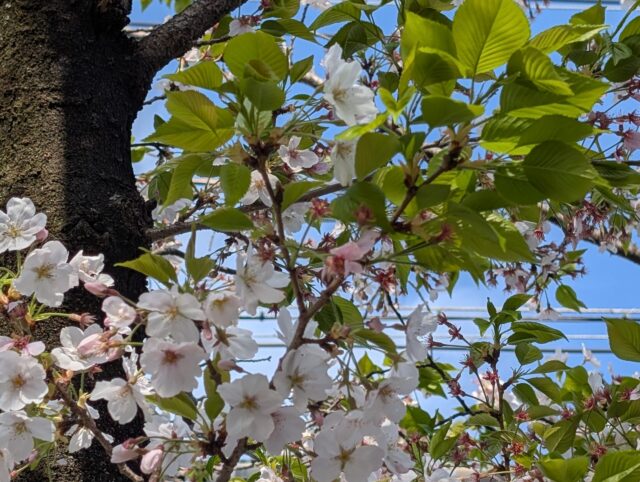
To ensure everyone enjoys cherry blossom season harmoniously, here are some important hanami manners to keep in mind:
DO:
- Take all trash with you – Japan has very few public trash cans
- Respect marked-off areas and keep to designated paths
- Keep noise levels reasonable, especially in residential areas
- Arrive early for popular spots (even pre-dawn for prime locations on weekends!)
- Share space generously – hanami is about community
DON’T:
- Break branches or shake trees for photos – this damages the blossoms
- Reserve large spaces for small groups
- Leave your spot unattended for long periods
- Forget to check park-specific rules (some prohibit alcohol or have closing times)
For International Visitors:
- Consider joining a guided hanami tour for a more structured experience
- Try arriving on weekdays when locals are working for less crowded viewing
- Look beyond the “top 10” spots for more authentic experiences
- Learn a few basic Japanese phrases – locals appreciate the effort!
Remember that cherry blossom season coincides with Japanese holidays and the start of the school year, making it one of the busiest travel periods. Book accommodations months in advance and be prepared for crowds at major sites.
Conclusion
Cherry blossom viewing isn’t just about seeing pretty flowers – it’s about experiencing a cornerstone of Japanese culture that celebrates nature’s fleeting beauty. From the historical tradition of hanami to the modern-day cherry blossom forecasts, this beautiful season brings people together in appreciation of life’s ephemeral moments.
Whether you’re joining salarymen for after-work hanami parties, quietly contemplating the blossoms at a temple garden, or dancing at a cherry blossom festival, the experience connects you to centuries of Japanese tradition while creating your own unforgettable memories.
So pack your picnic sheet, grab your camera, and prepare to be amazed by one of nature’s most spectacular shows. The cherry blossoms of Japan await – and trust me, they’re worth every bit of planning to see them in their full glory!
Remember: Like the cherry blossoms themselves, this magical season doesn’t last long. Embrace the Japanese concept of “ichigo ichie” – treasure every moment of this once-in-a-lifetime experience!
